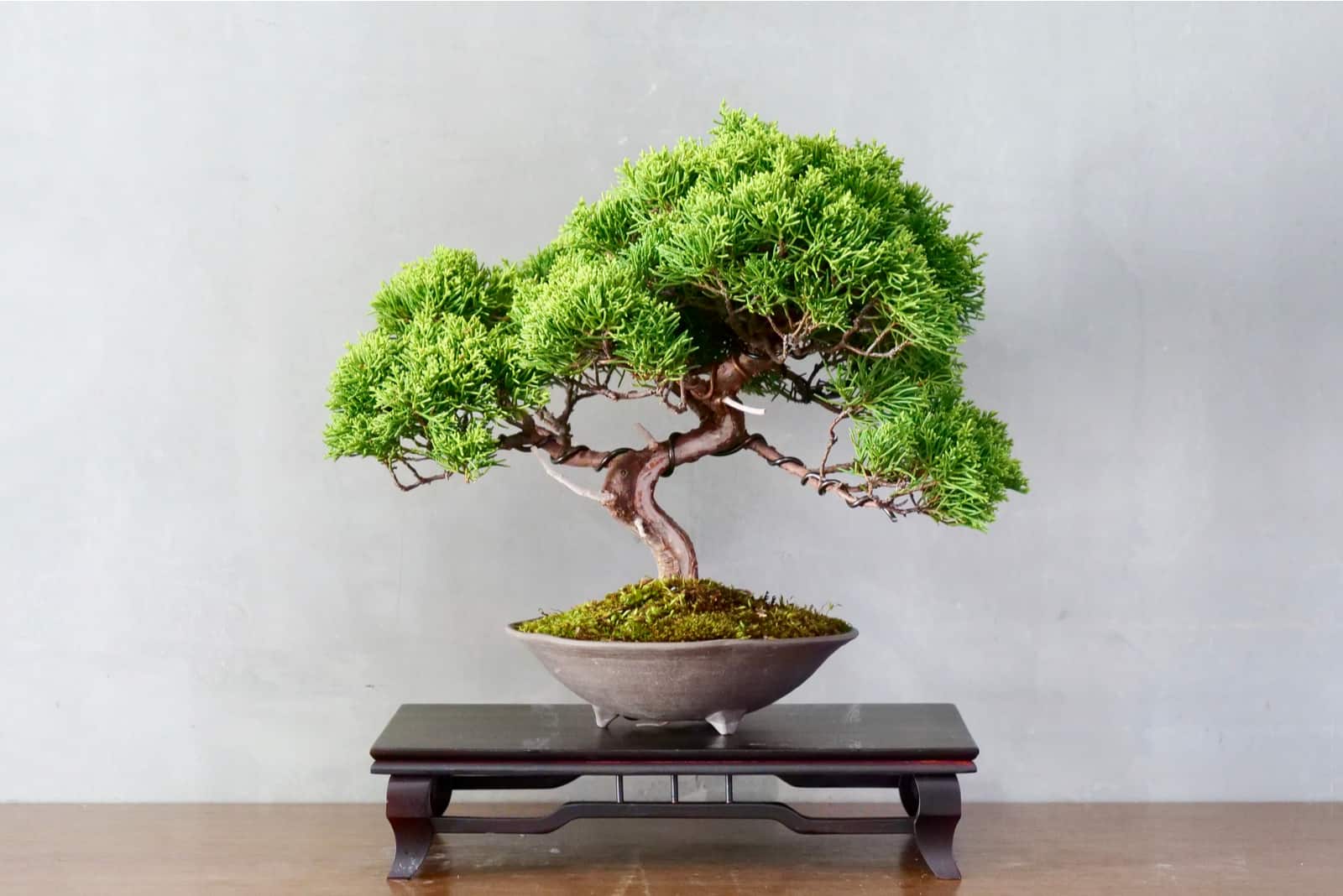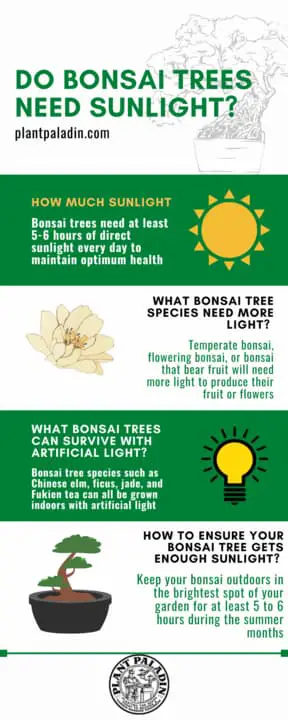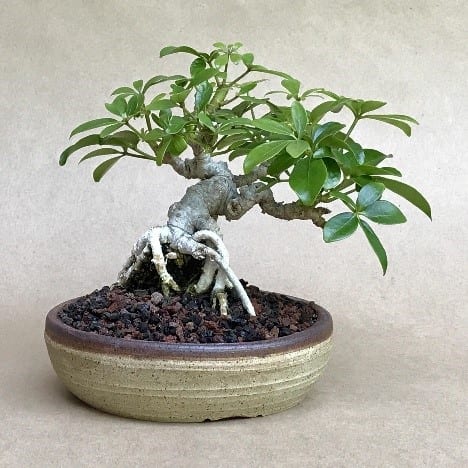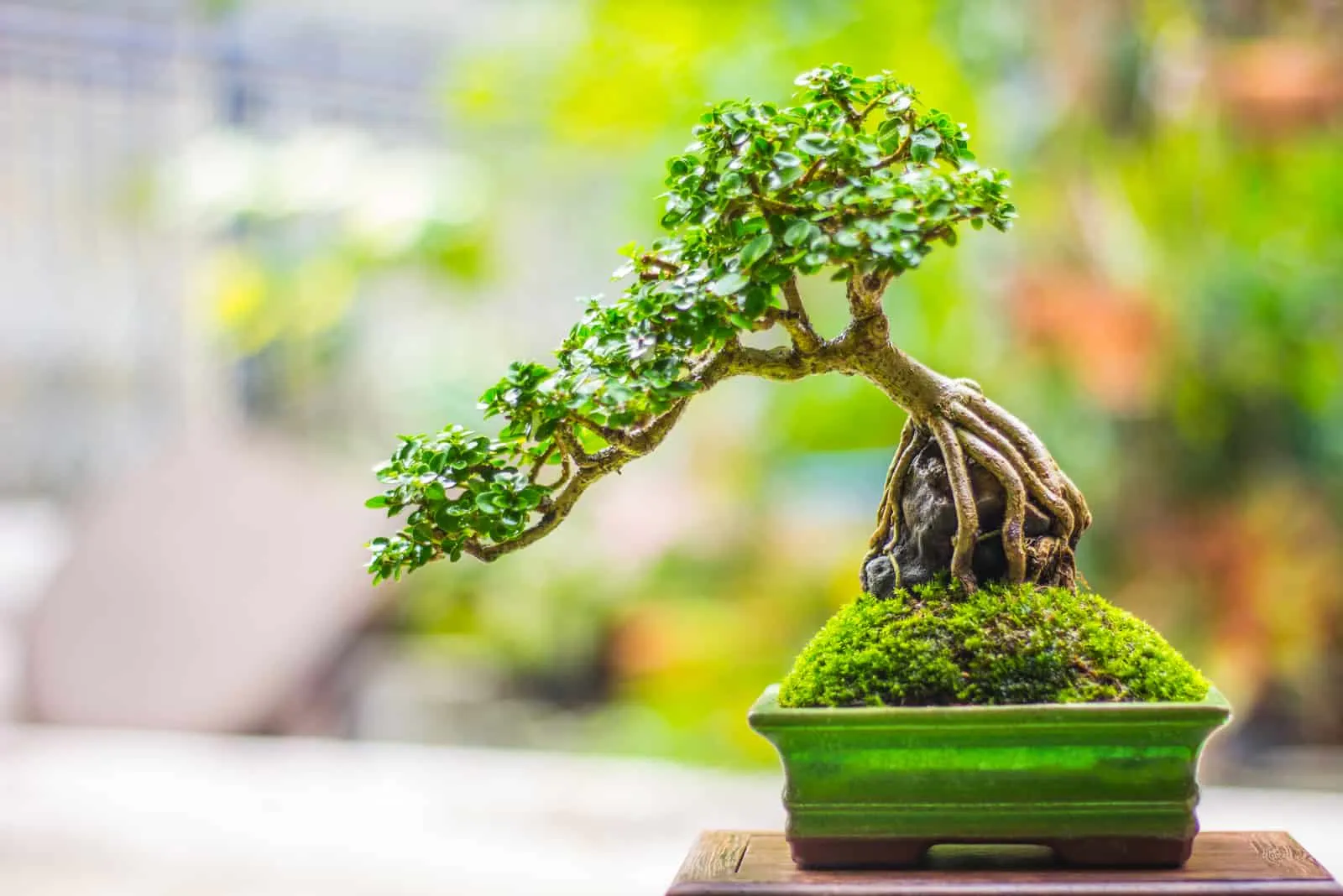Curious about whether bonsai prefer sun or shade? Well, we’ve got all the juicy details for you! From indoor to outdoor varieties, these tiny trees come in a wide range of types, including Japanese maples, cherry blossoms, and junipers.
Some bonsai thrive in full sun, soaking up those rays and basking in the glory of their miniature stature. Others prefer the shade, finding solace in the cool and tranquil corners of the garden. Whether they’re enjoying the sun’s warmth or seeking shelter from its scorching rays, these beautiful bonsai trees are sure to add a touch of charm to any space.
So, get ready to learn all about how to keep your bonsai happy, whether it’s a sun-worshipper or a shade-seeker!

Bonsai prefer bright indirect sunlight
When it comes to providing the perfect amount of sunlight for our beloved bonsai trees, understanding their preferences is crucial. Bonsai, just like any other plant, have specific sunlight requirements that must be met in order to thrive. So, do bonsai like sun or shade? Well, the answer lies somewhere in between.
Bonsai prefer bright indirect sunlight, striking a delicate balance between too much and too little sun exposure. In this article, we will explore the various factors that influence the sunlight requirements of bonsai trees, the different types of bonsai that thrive in full sun or partial shade, and the best practices to ensure our bonsai receive the optimal amount of sunlight.
Factors that influence sunlight requirements
Several factors determine the sunlight requirements of bonsai trees. Let’s take a closer look at these factors to better understand how sunlight plays a vital role in the growth and overall health of our bonsai.
Type of bonsai tree
Different species of bonsai trees have varying sunlight preferences. Some bonsai species thrive in full sun, while others prefer partial shade. It is essential to research and understand the specific sunlight requirements of the bonsai species we are cultivating to provide the ideal environment for their growth.
Indoor or outdoor bonsai
The distinction between indoor and outdoor bonsai is also crucial in determining their sunlight needs. Indoor bonsai typically require less sunlight compared to outdoor bonsai. Since indoor bonsai are shielded from direct sunlight, they are more sensitive to intense light exposure and may suffer if exposed to bright sunlight for extended periods.
Geographical location
The geographical location in which we grow our bonsai can greatly impact their sunlight requirements. Bonsai trees grown in regions with long hours of sunlight and intense heat may require more shade to prevent sunburn or dehydration. On the other hand, bonsai trees in cooler climates may benefit from more direct sunlight exposure to promote healthy growth and development.
Seasonal changes
The changing seasons also influence the amount of sunlight bonsai trees receive and their corresponding requirements. During spring and summer, when the sun is stronger and shines for more extended periods, bonsai trees generally require more shade and protection. In contrast, during fall and winter, when sunlight is weaker and scarce, bonsai trees may benefit from more direct sunlight exposure.
Bonsai trees that prefer full sun
While bonsai trees, in general, prefer bright indirect sunlight, some species thrive in full sun conditions. Here are a few outdoor bonsai species and sun-loving indoor bonsai that do well in direct sunlight:
Outdoor bonsai species
- Juniper Bonsai: These hardy evergreen trees enjoy full sun exposure and are known for their stunning blue foliage and twisted trunks. Their ability to withstand drought and tolerate direct sunlight makes them an excellent choice for outdoor bonsai.
- Japanese Maple Bonsai: These beautiful bonsai trees feature intricate, colorful leaves and prefer partial shade. However, certain cultivars can tolerate full sun, making them a versatile and eye-catching addition to any bonsai collection.
- Ficus Bonsai: Ficus trees are popular indoor and outdoor bonsai. While they can tolerate some shade, they thrive in full sun conditions. Their glossy leaves and intricate root systems create a beautiful display when exposed to direct sunlight.
Sun-loving indoor bonsai
- Jade Bonsai: The Jade bonsai, also known as Crassula ovata, thrives in bright, indirect sunlight but can tolerate full sun exposure. Its vibrant green, fleshy leaves add a touch of beauty and elegance to any indoor bonsai collection.
- Hawaiian Umbrella Bonsai: This tropical bonsai species loves the sun. With its glossy, miniature leaves and delicate umbrella-like branches, it shines best when placed in a sunny spot indoors.
Bonsai trees that prefer partial shade
While some bonsai trees love basking in the sun, others prefer the shelter of partial shade. Here, we explore a few outdoor bonsai species and shade-tolerant indoor bonsai that thrive in environments with less direct sunlight:
Outdoor bonsai species
- Chinese Elm Bonsai: The Chinese Elm bonsai (Ulmus parvifolia) prefers partial shade in hot summer months to protect it from scorching temperatures. However, it can handle full sun exposure in milder climates.
- Azalea Bonsai: These stunning flowering bonsai trees prefer some shade during the hottest part of the day to prevent the flowers from wilting. In nature, they often grow under the canopy of larger trees, providing them with the perfect balance of sunlight and shade.
Shade-tolerant indoor bonsai
- Ginseng Ficus Bonsai: The Ginseng Ficus bonsai (Ficus microcarpa) is a popular indoor bonsai that thrives in bright, indirect light. It can handle some shade and is ideal for individuals who may not have access to direct sunlight in their living spaces.
- Serissa Bonsai: Also known as the Snow Rose, the Serissa bonsai (Serissa foetida) prefers bright, filtered light but can tolerate partial shade. This elegant bonsai features small white or pink flowers, adding a touch of beauty to any indoor bonsai collection.

How to determine bonsai’s sunlight requirements
To determine the sunlight requirements of our bonsai trees, we need to consider several factors and follow some essential steps. Here are a few methods to determine the optimal amount of sunlight our bonsai need:
Research the specific bonsai species
Each bonsai species has its unique sunlight preferences. Conduct thorough research or consult bonsai resources to understand the specific requirements of the bonsai species we are cultivating. This information will help us create an environment that mimics their natural habitat and provides the ideal amount of sunlight.
Observe the tree’s natural habitat
Observing the natural habitat from which our bonsai species originate can provide valuable insight into their sunlight needs. If a bonsai species naturally grows in shaded areas under the canopy of larger trees, it is an indication that they prefer partial shade. Similarly, bonsai species from open, sunny habitats may require more direct sunlight exposure.
Consult with bonsai experts
If in doubt, it is always beneficial to seek advice from experienced bonsai experts. They can guide us in determining the specific sunlight requirements of our bonsai trees. Bonsai clubs, forums, and local nurseries are excellent sources for expert guidance.
Factors to consider in providing sunlight for bonsai
While it is essential to provide the right amount of sunlight for our bonsai trees, we must also consider other factors that can affect their overall health and well-being. Here are a few factors to consider when providing sunlight for bonsai:
Intensity and duration of sunlight
The intensity and duration of sunlight vary throughout the day and the seasons. Bonsai trees benefit from morning and late afternoon sun, as the midday sun tends to be much stronger and can scorch delicate leaves and bark. By understanding the intensity and duration of sunlight in our specific location, we can adjust the exposure accordingly.
Protecting bonsai from extreme temperature and sunlight exposure
Extreme temperatures can have adverse effects on bonsai trees. In hot climates, it is crucial to protect them from intense sunlight and high temperatures by providing shade or moving them to a cooler location. Similarly, in colder climates, it is essential to protect them from freezing temperatures, which can damage their delicate roots and foliage.
Adjusting sunlight exposure for indoor and outdoor bonsai
Indoor bonsai may require additional measures to ensure they receive adequate sunlight. Placing them near a bright window or using artificial grow lights can provide the necessary light energy for indoor bonsai. However, it is crucial to monitor their exposure to prevent overheating or sunburn.
For outdoor bonsai, adjusting their placement can help regulate sunlight exposure. Placing them under the shade of larger trees or using shade cloths during peak sunlight hours can prevent sunburn and dehydration.

Effects of inadequate sunlight on bonsai trees
Providing the right amount of sunlight for bonsai trees is vital for their overall health. Inadequate sunlight can have several adverse effects on bonsai trees, including:
Weak growth
Insufficient sunlight can stunt the growth of bonsai trees. Without enough light energy, they may struggle to produce healthy leaves and branches, resulting in weak and underdeveloped bonsai.
Pale or yellowing leaves
A lack of sunlight can cause the leaves of bonsai trees to become pale or yellow. This discoloration is a sign that the tree is not receiving enough energy to perform photosynthesis properly.
Reduced flowering or fruiting
Many bonsai trees are prized for their beautiful flowers or fruits. Inadequate sunlight can inhibit their blooming or fruiting potential, depriving us of the vibrant displays we so eagerly anticipate.
Increased susceptibility to pests and diseases
Bonsai trees lacking sufficient sunlight may become weak and vulnerable to pest infestations and diseases. A healthy dose of sunlight strengthens their immune systems, making them more capable of warding off potential threats.
Tips for providing optimal sunlight for bonsai
To ensure our bonsai receive the optimal amount of sunlight, here are a few tips to consider:
Finding the right balance of sunlight
Striking the right balance between direct sunlight and shade is crucial for bonsai health. By observing and adjusting the amount of sunlight they receive, we can create the ideal environment for their growth.
Using shade cloth or other shading methods
For outdoor bonsai exposed to intense sunlight, the use of shade cloth or other shading methods can help filter and reduce the intensity of sunlight. This ensures that the bonsai is protected from sunburn and dehydration while still receiving an appropriate amount of light.
Rotating bonsai trees for even sunlight exposure
To promote even growth and prevent one side of the bonsai from receiving more sunlight than the other, it is beneficial to rotate the bonsai periodically. This helps ensure that all parts of the tree receive an equal amount of sunlight.

Caring for bonsai in different seasons
Considering the seasonal changes is crucial when caring for our bonsai trees. Here are a few tips on meeting their sunlight requirements throughout the year:
Sunlight requirements in spring
During the spring months, bonsai trees often require more shade and protection from intense sunlight. Gradually acclimating them to brighter conditions can prepare them for the upcoming summer months.
Sunlight requirements in summer
The summer months bring longer days and stronger sunlight. Providing partial shade and ensuring adequate hydration is vital to prevent the bonsai from becoming dehydrated or sunburned. Regular monitoring and adjusting sunlight exposure accordingly is essential during this time.
Sunlight requirements in autumn
As the days become shorter and sunlight intensity diminishes, bonsai trees may benefit from more direct sunlight exposure. This helps prepare them for the dormancy period that follows and allows them to store energy for the next growing season.
Sunlight requirements in winter
During the winter months, when sunlight is scarce, bonsai trees benefit from any available direct sunlight exposure. Placing them near a sunny window or using artificial grow lights can provide the necessary light energy for their survival.
Final thoughts on bonsai’s sunlight preferences
Understanding and meeting the sunlight requirements of our bonsai trees is crucial for their growth and overall well-being. While bonsai prefer bright indirect sunlight, finding the right balance between shade and direct sunlight is essential.
By considering the factors that influence sunlight preferences, providing the optimal amount of light, and adjusting to seasonal changes, we can ensure that our bonsai thrive and bring joy for years to come.
So, let’s embrace the art of bonsai and create the perfect sunlight environment for these miniature trees to flourish in our homes and gardens.



